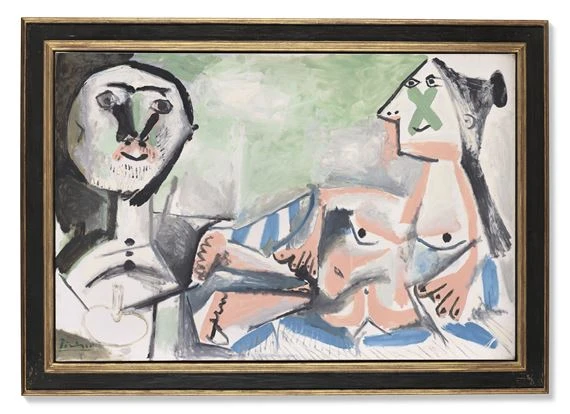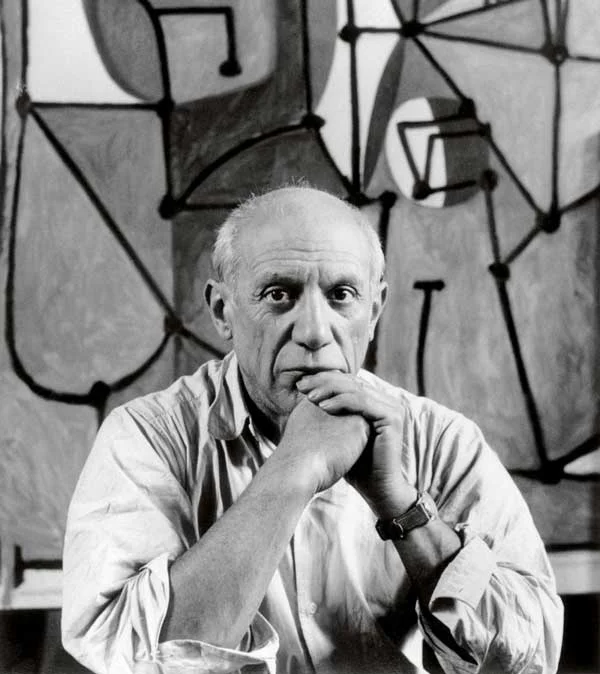
Le Peintre et son Modèle
Le Peintre et son Modèle is a recurring and deeply personal theme in Pablo Picasso’s late work, offering a poignant meditation on the act of creation and the intimate relationship between artist and muse. Often composed with bold lines and a fluid hand, these works depict the studio as a sacred, almost mythic space where observation, desire, and imagination merge.
In this composition, Picasso captures the eternal dialogue between creator and subject—between looking and being seen. The model, typically nude, is rendered with both sensuality and abstraction, while the painter is often a stand-in for Picasso himself, reflecting his lifelong preoccupation with the artistic process.
Combining spontaneity with mastery, Le Peintre et son Modèle serves as both self-portrait and love letter to art-making, encapsulating the tension, tenderness, and timeless mystery of inspiration.

Pablo Picasso (1881–1973)
Pablo Picasso, the Spanish master who redefined the course of modern art, was a relentless innovator whose influence remains unmatched. From pioneering Cubism with Les Demoiselles d’Avignon to creating politically charged icons like Guernica, his artistic journey spanned a wide range of styles and media. Beyond painting, Picasso explored sculpture, ceramics, and printmaking with equal brilliance. Deeply entwined with his personal life, his work captured the spirit of the times and pushed the boundaries of expression. As a visionary who constantly reinvented himself, Picasso left a legacy that continues to shape the artistic landscape to this day.
To provide the best experiences, we use technologies like cookies to store and/or access device information. Consent to these technologies will allow us to process data such as browsing behavior or unique IDs on this site. Not consenting or withdrawing consent may negatively affect certain features and functions.
Market reports for visionary collectors and insiders.